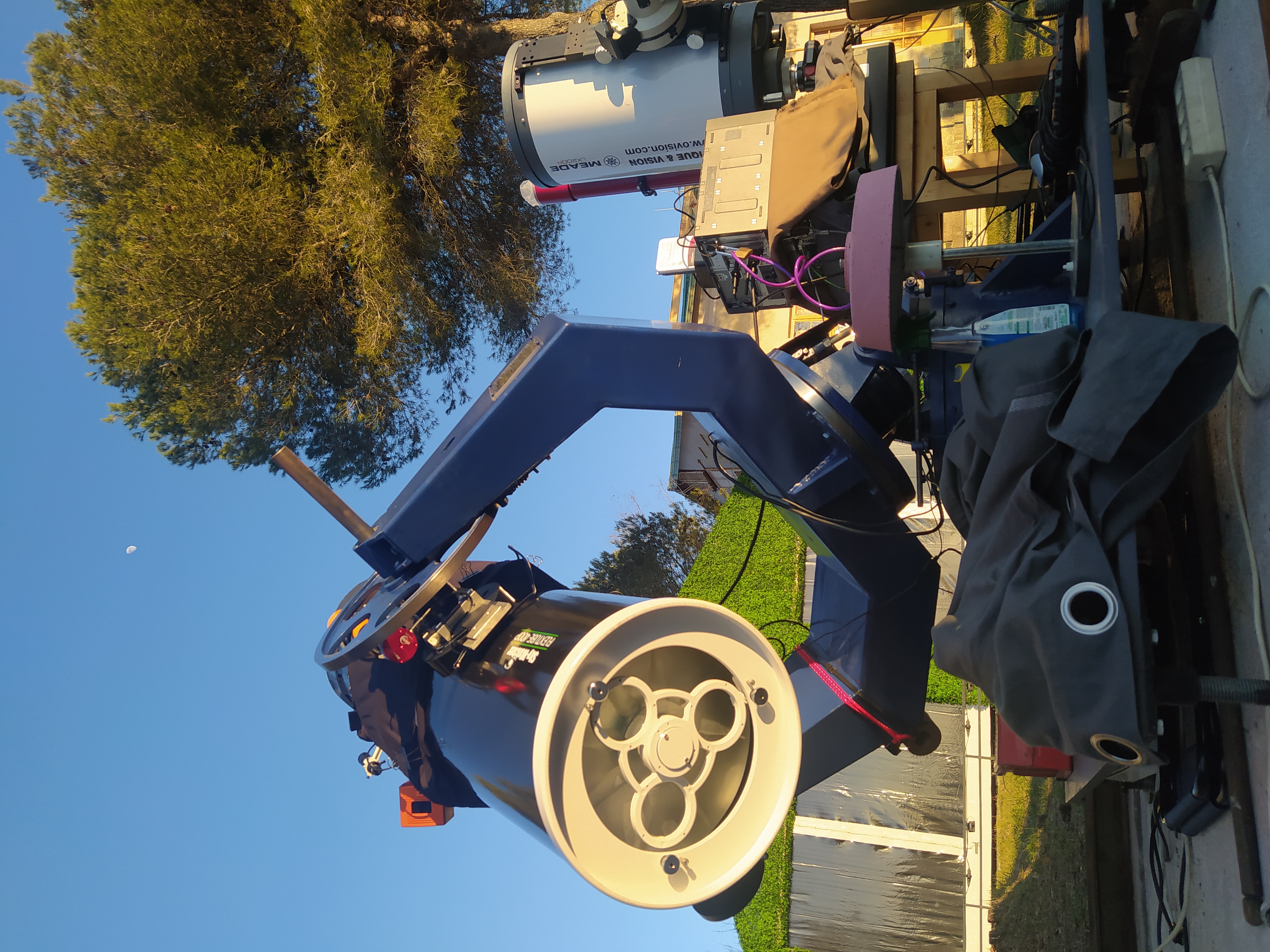NEWS
News
- Détails
The Twin Impact Lunar Telescope (TILT) (March 2025)
Thanks to a synergy between OCA, Laboratoire Lagrange, the Institute de la Physique du Globe de Paris (IPGP) we are happy to present the TILT. This twin telescope has been designed by Paul Girard and Nicolas Mauclert of the mechanical workshop of OCA, built by Paul and Nicolas and Thierry Parra with the support of Bruno Mongellaz and colleagues.
A new telescope for impact flash monitoring in the infrared (July 2024)
Here the basic concept (stepfile-3D-model) and here is a concept based on a planewave L500 mount (stepfile-3D-model)
First detection of an impact flash in the near infrared (Januray 26th, 2023)
Daniel Sheward detected the first (confirmed) lunar impact flash in the infrared (J band) while observing remotely from the Aberystwyth University (UK) with the near-infrared lunar impact flash telescope on Mt. Gros of Nice. In the video below we see the multiframe flash which lasted approximately 240 msec. Each frame is a differnce between a refernce image takein seconds before the impact. The scene observed by the telescope is approximately placed compared to the dark and bright side of the moon at the time of the detection (image from Stellarium software).
First near-infrared observation of lunar impact flash (November - December 2022)
In November and December 2022 we modified our setup. We run a pilot program to oberve lunar impact flashes in the near infrared (also called shor wave infrared; SWIR for short). This project is in collaboration with Prof. Philippe Lognonne of the Institut de Physique du Globe de Paris (IPGP). Our setup is based on a Raptor Photonics SWIR camera 640x512 pixels each of which has a 15 micron size. In order to have a reasonalble field of view with this camera, we changed our Telescope Tube Assembly. Namely, our setup is now based on a 16" skywatcher f/D=4.5 Newtonian telescope kidnly offered to us by colleague P. Tanga (OCA).

Test of the pointing model (March 8th, 2022)
The pointing model of the telescope consists in determining a transformation between the mount coordinates and the coordinates on the sky. When this transformation is determined (as explained here), the user enters the celestial coordinates and the telescope will slew to point the sky at those coordinates. Here we see a video where we slew the telescope from the galaxy Messier 96 to the open cluster Messier 48 and return back to Messier 48, using a pointing model calculated for a telescope mount that was not correctly aligned (on purpose) to the celestial pole. Despite the mis-aligment, the pointing is good within few arcmins.
Update on dectiion of human-made object that impacted the Moon on march 4th.
Astronomers believe the derelict rocket stage came from China’s Chang’e 5-T1 mission that launched in 2014 and it is not the upper stage of the Falcon 9. However, experts are not completely sure. See e.g. this story at the National Geographics.
Detection of Falcon 9 before it impacts the Moon.
On February 8, 2022, Falcon 9's upper stage, also known as NORAD 40391, completed its final perigee before following its final trajectory to meet its final fate by impacting the Moon. The Viscardy telescope was used to image the perigee passage of SpaceX's Falcon 9 missile. In the video, we see a star field and a small trail of light coming from the top right, crossing the field and exiting the field at the bottom. It's SpaceX's Falcon 9 missile. At the time of the crossing, its luminosity was about 100 times dimmer than that of the faintest stars visible to the naked eye. Its image is elongated due to its large movement during the exposure time. This large space debris is 14 m long, 3.66 m in diameter and weighs about 3 tons. It will create a crater on the farside of the Moon from which scientists will learn important information about the physics of impacts and the processes of crater formation.
UMR LAGRANGE
Observatoire de la Côte d’Azur
Boulevard de l’Observatoire
CS 34229 - F 06304 NICE Cedex 4
Tél. : +33 (0)4 92 00 30 11
Fax : +33 (0)4 92 00 30 33




